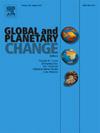In this study, we employ biological, geochemical and mineral, and physical proxies to quantitatively and semi-quantitatively reconstruct regional paleoclimate variations in China over the past ∼21 thousand years (ka). We have constructed state-of-the-art transfer functions between proxies and climatic variables in East Asia, revealing substantial paleoclimate variability, and demonstrate significant diversity of paleoclimate variations in regions of China over the past ∼21 ka. Compared with observational data between 1961 and 1990, averaged mean annual temperature (MAT) was ∼5 °C (3–8 °C) lower during the Last Glacial Maximum (LGM, ∼21 ± 3 ka), and ∼ 2 °C (1–3 °C) higher during Holocene Optimum (HO, ±9 ka) in China; while averaged mean annual precipitation (MAP) and averaged summer precipitation varied between 30 and 150%, with enhanced seasonality during the warmer Holocene (8–5 ka). Our quantitative and semi-quantitative paleoclimate reconstructions reveal both similarities and contrasts with previous studies of regional temperature and precipitation variability. The most remarkable paleoclimate variability is recorded in the transitional zone between the humid monsoon and arid desert regions of central and northern China. We conducted a dynamic downscaling paleoclimate simulation with a regional climate model (RegCM4), using the output from the fully-forced transient simulation of the global climate (TraCE-21 K) as the prescribed boundary conditions, to simulate regional climate changes at high spatial resolution in China over the past ∼21 ka. The results improve paleoclimate simulations at regional scales, but reveal differences in comparison with TraCE-21 K, thereby highlighting uncertainties in the simulation modeling. Moreover, we compare proxy-based paleoclimate reconstructions and the output of TraCE-21 K to identify inconsistencies in relation to regional paleoclimate variations, and confirm a generally consistent warming trend in MAT from the LGM to the HO followed by a cooling trend during the late Holocene. An overall increase in both annual and summer precipitation is observed from LGM to Holocene. This general paleoclimate pattern is likely to have been driven by northern hemisphere ice volume and atmospheric greenhouse gas concentrations (GHGs) during the last deglaciation, and boreal summer insolation during the Holocene. This study represents the first attempt to use multi sources and large datasets of proxy reconstructions and numerical simulations to evaluate regional paleoclimate variability in China since the LGM. Our research provides a comprehensive overview of climate change over the past 21 ka and underscores the critical importance of conducting high-resolution simulations and quantitative paleoclimate studies. This approach is essential for deciphering patterns of paleoclimate change that are currently poorly defined.


